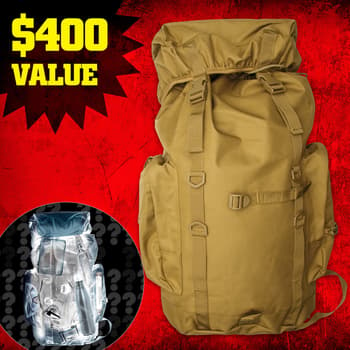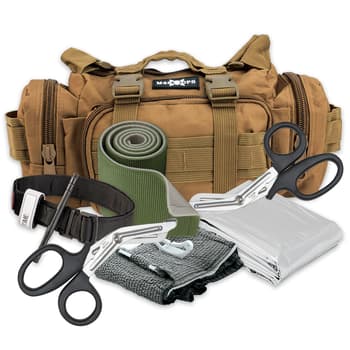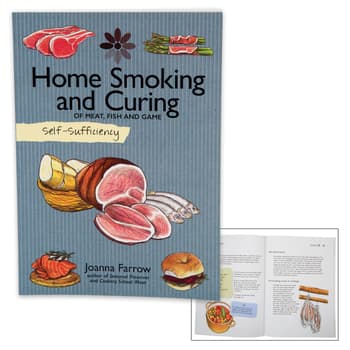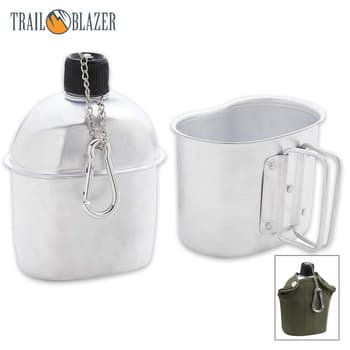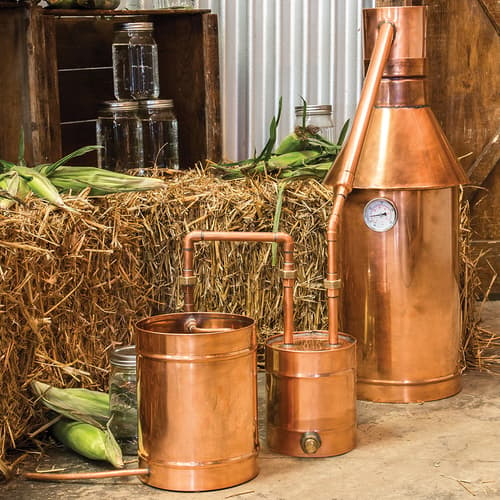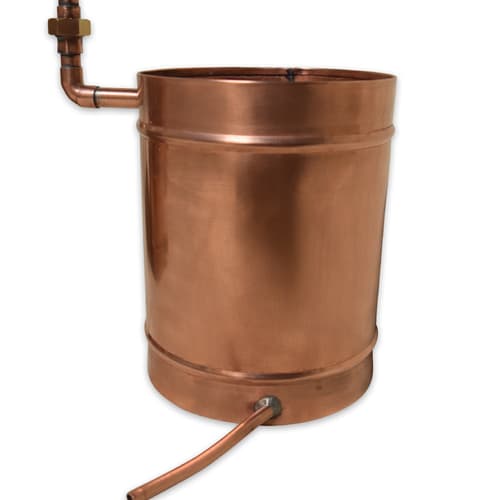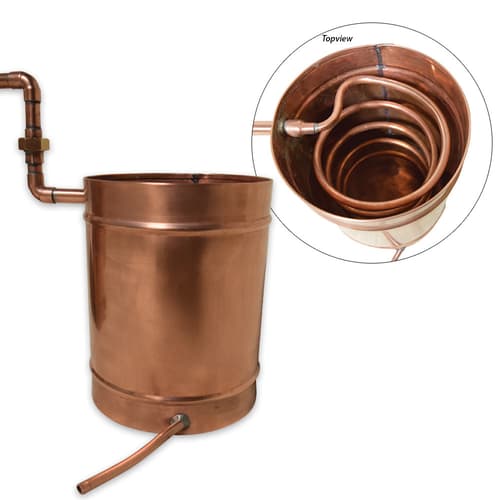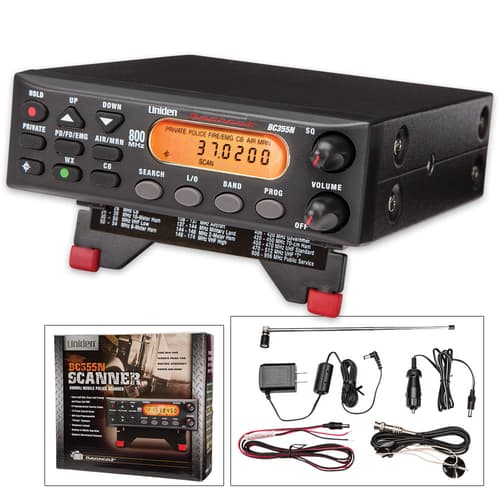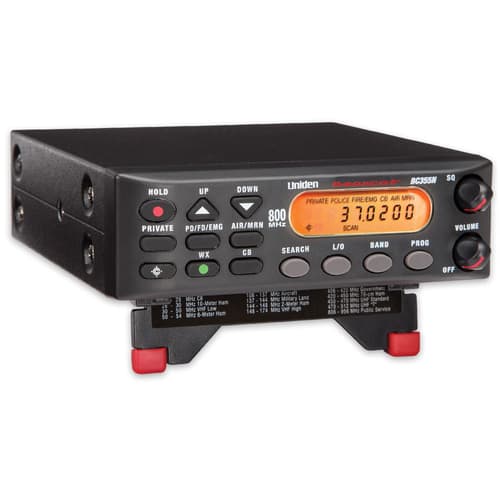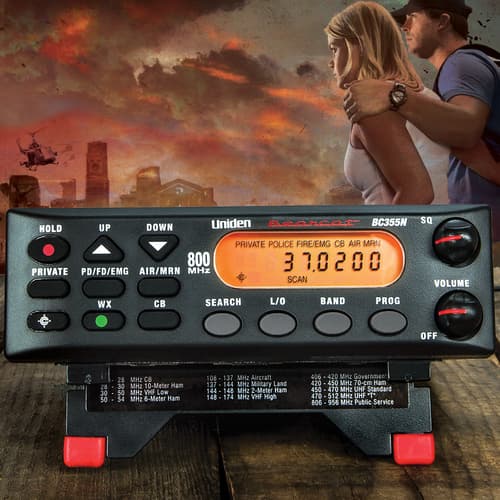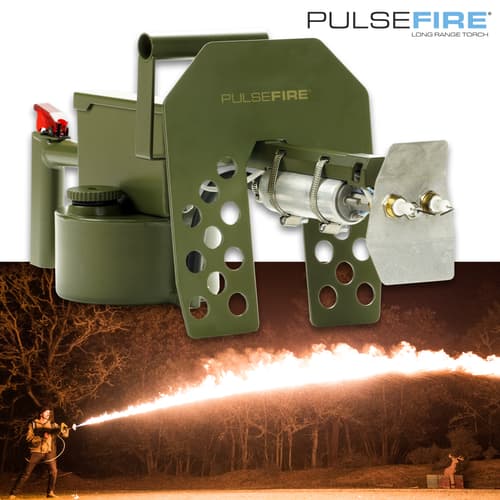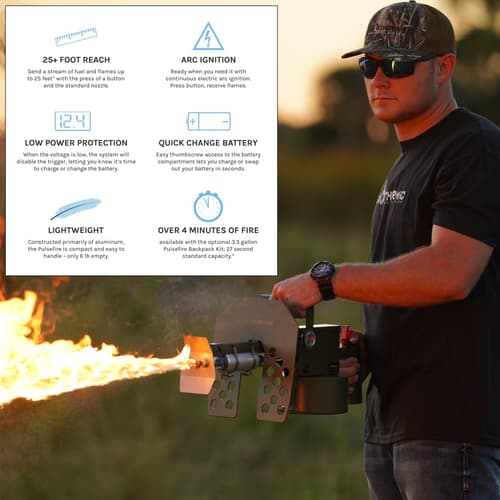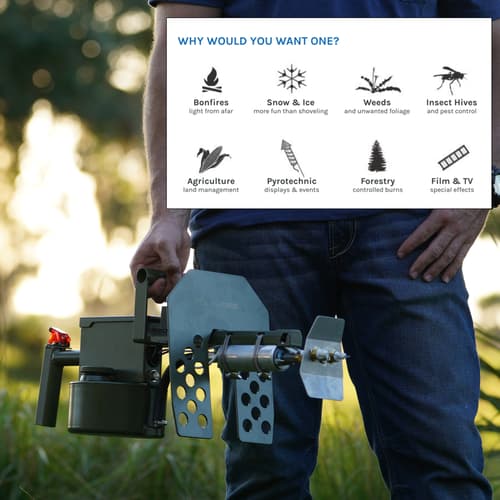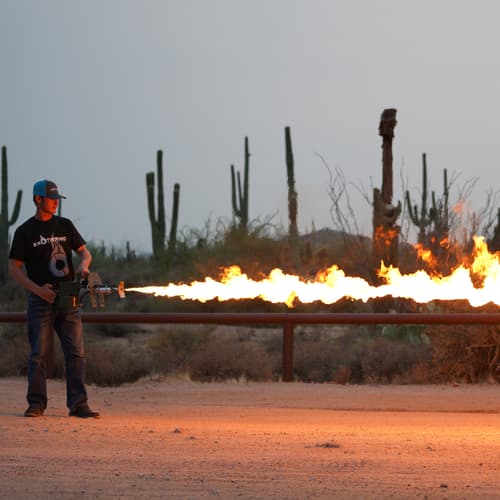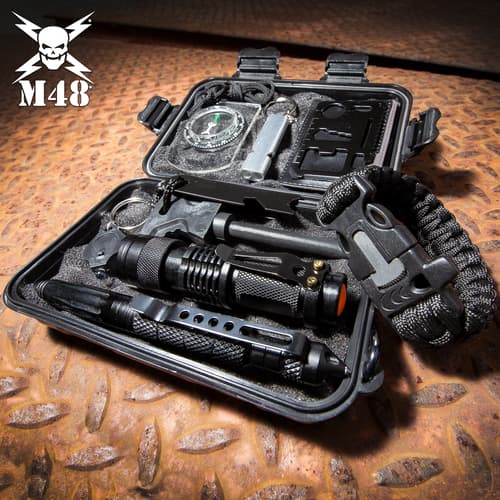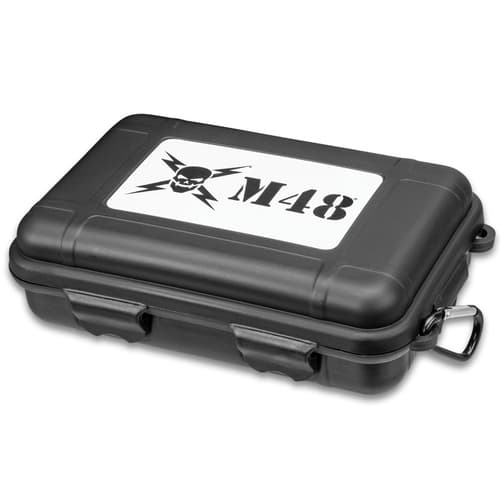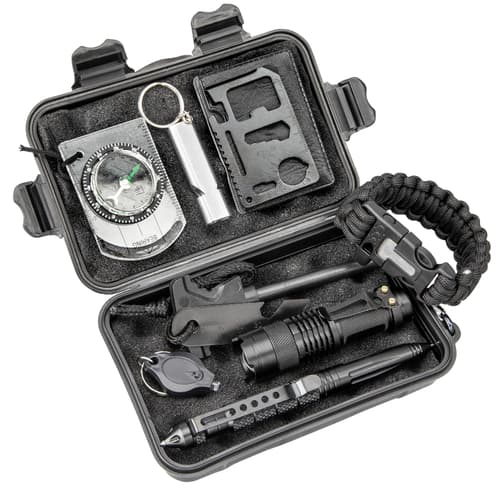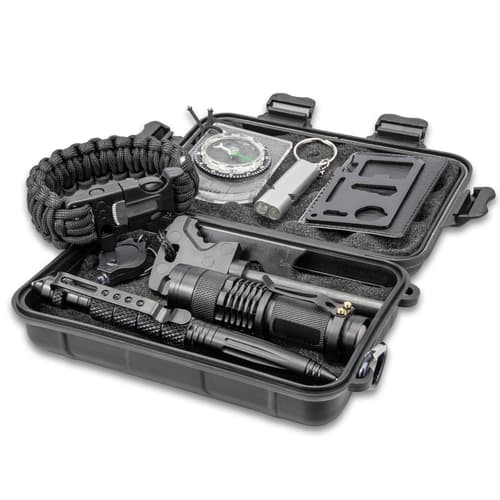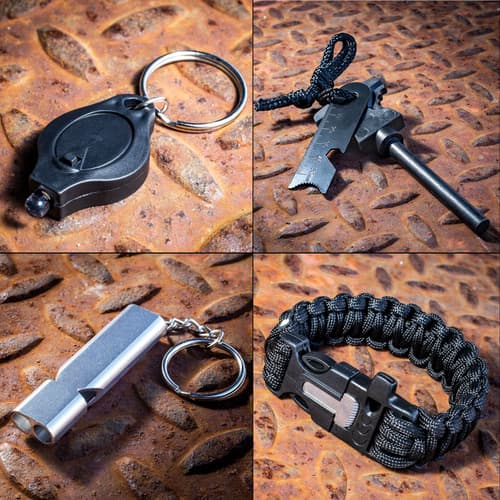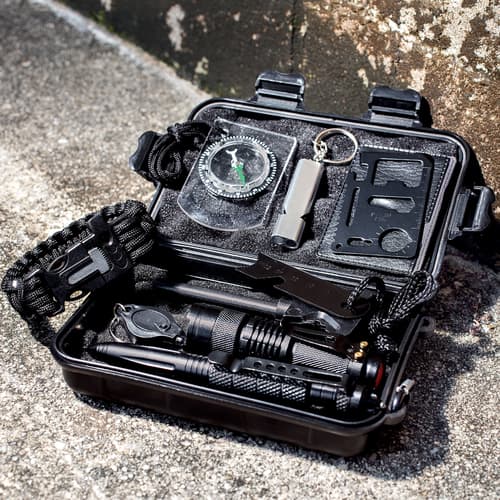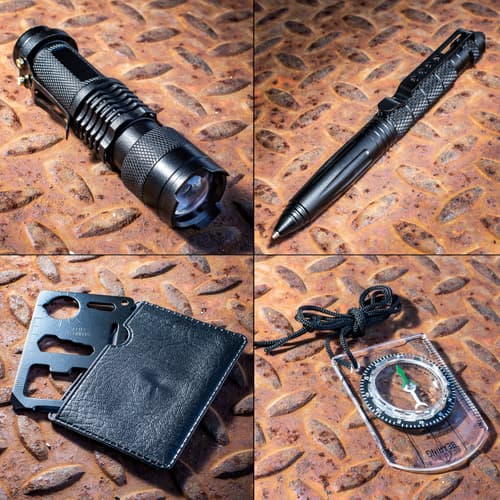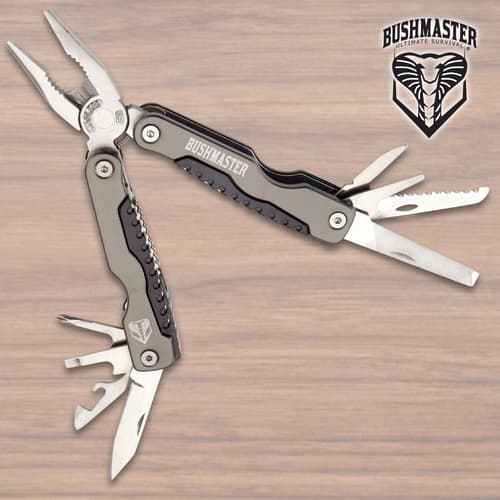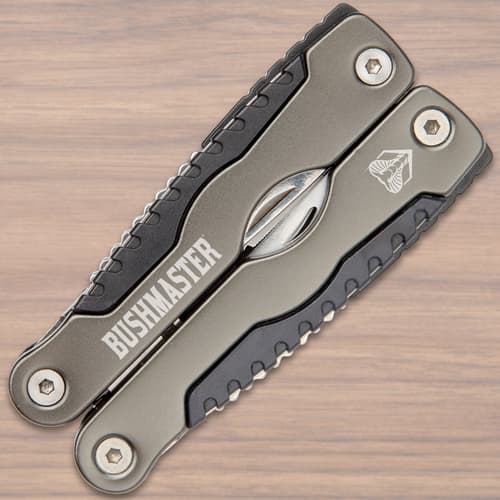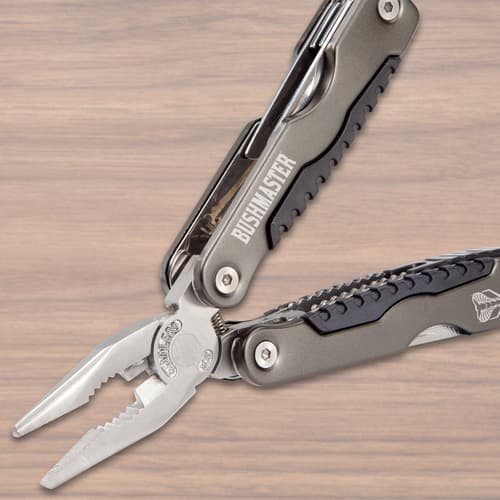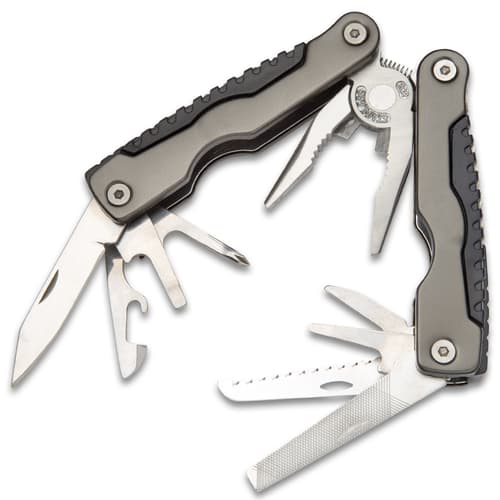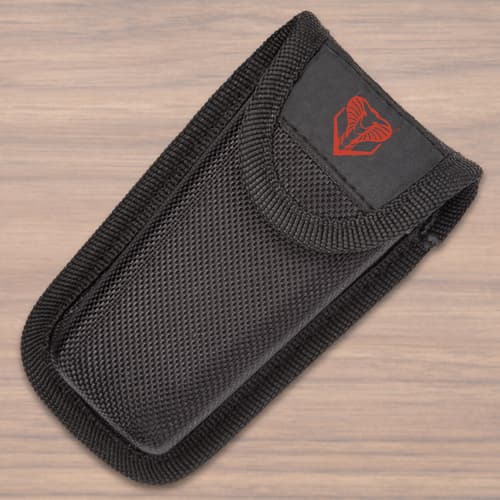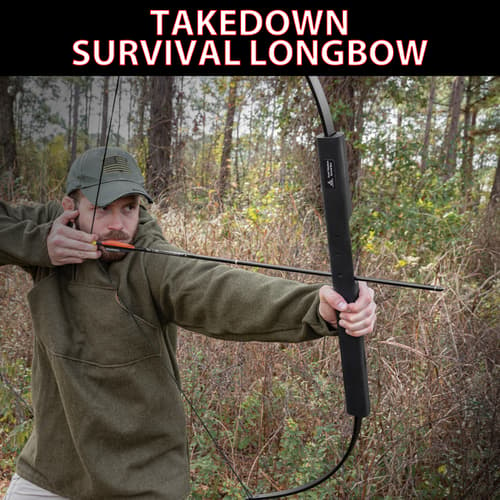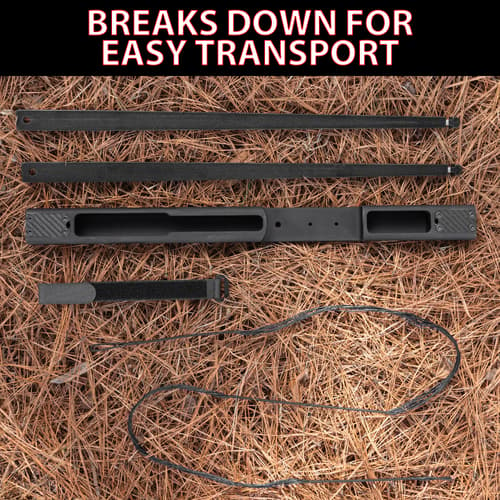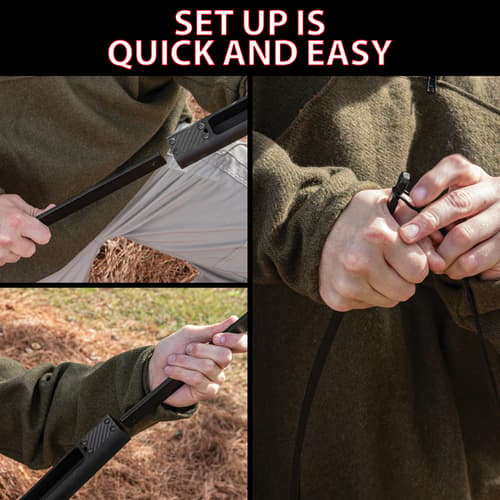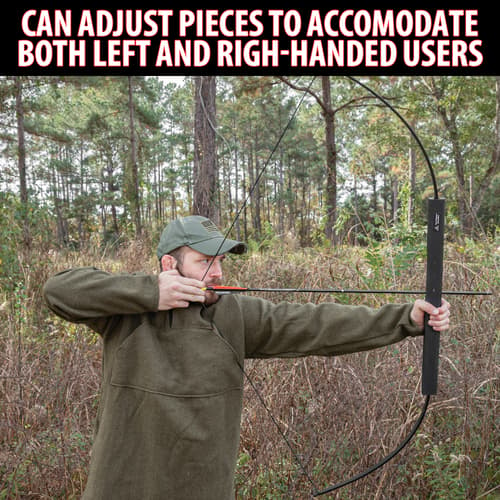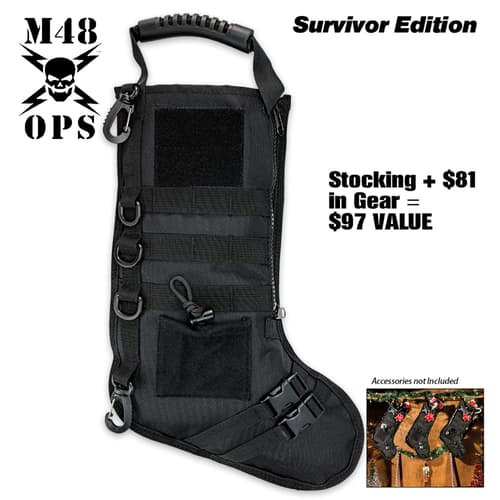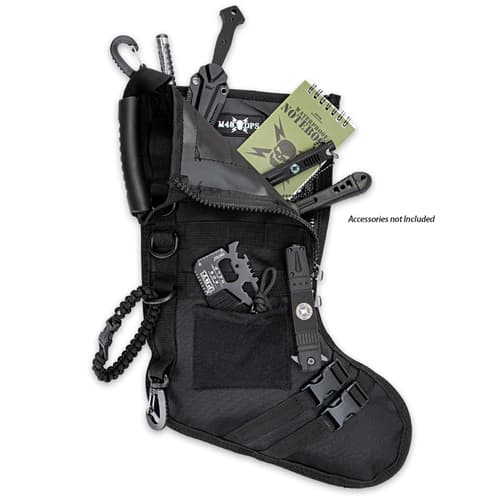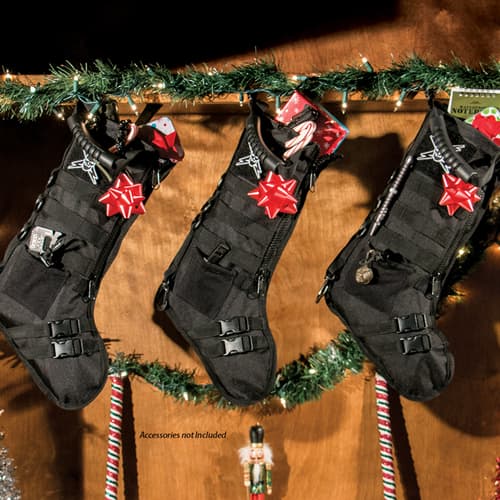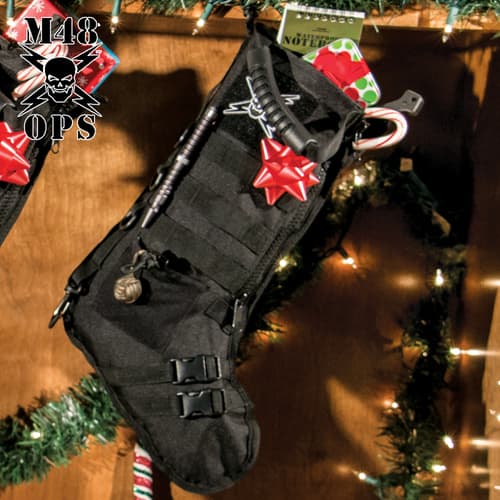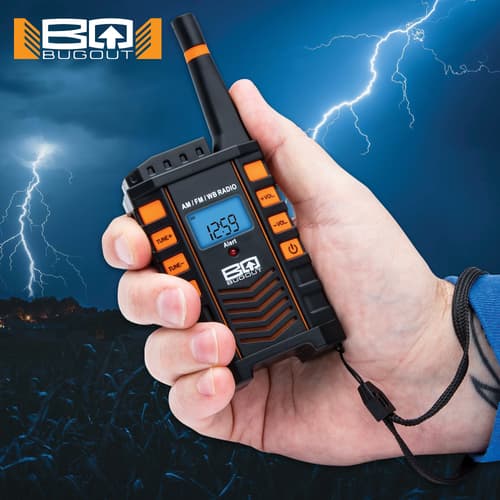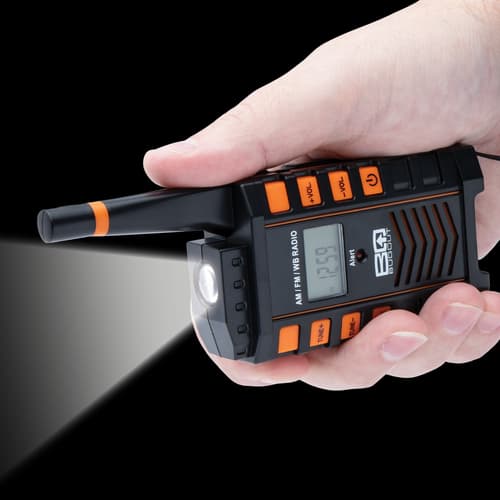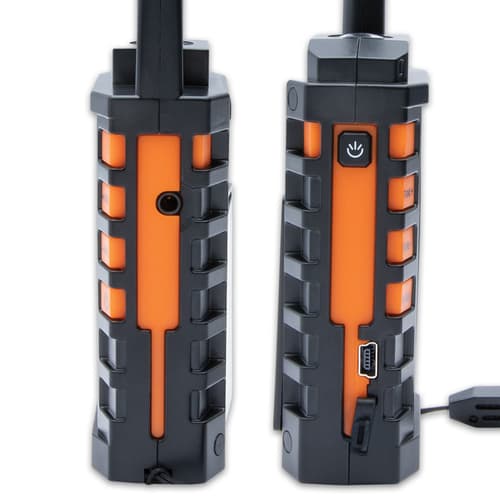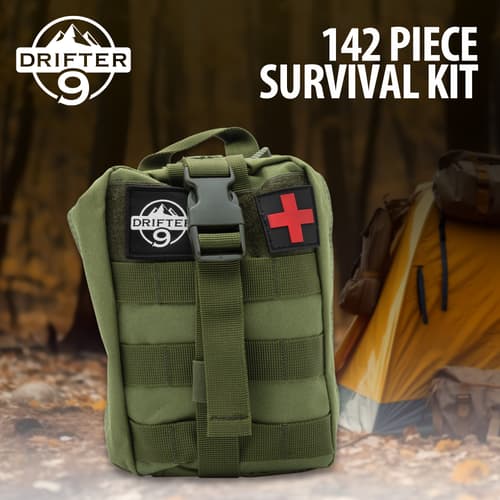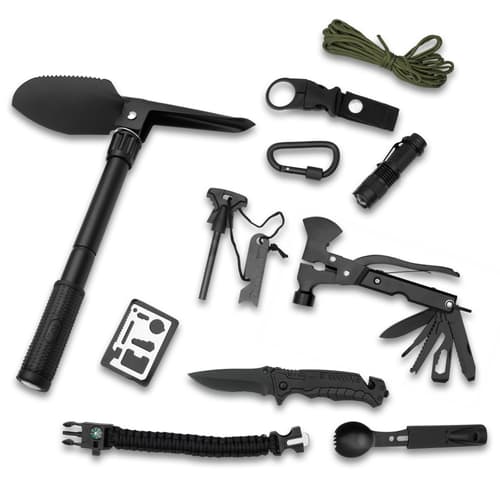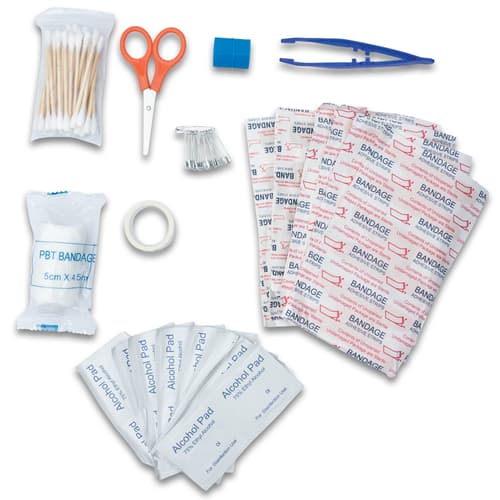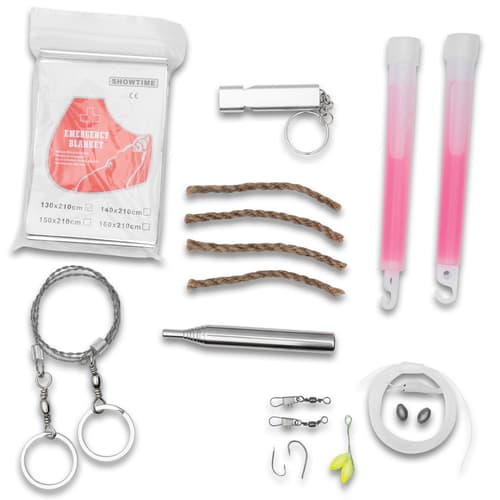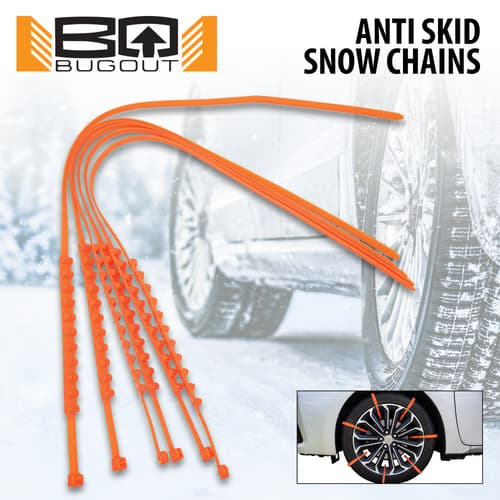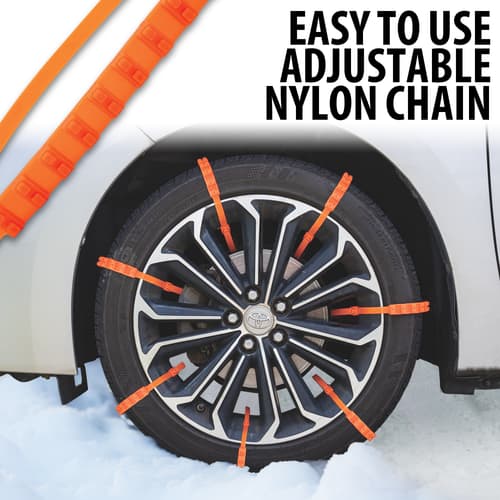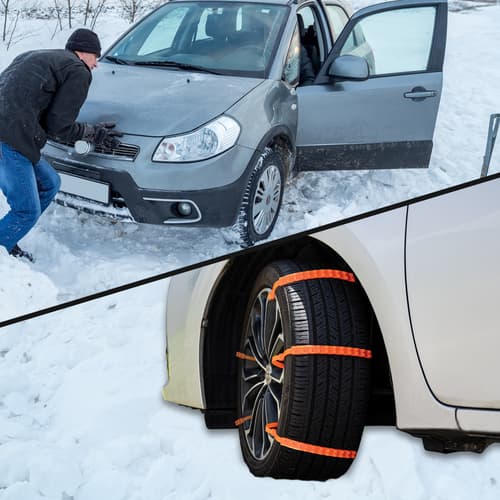Build A Get-Home-Bag
Build A Get-Home-Bag

By Adelia Ladson
What’s A Get-Home-Bag?
When things are dicey, anything can happen and getting home on foot may take a while. Your workplace may be only thirty miles away from your house but it’s going to take you ten hours to get there, allowing plenty of time for trouble during your trek. If you work 45 to 60 miles from home, you’re looking at 15 to 20 hours to get home and that is walking non-stop, which is something you’re not going to be able to do. There’s bound to be obstacles both physical and human. If you’re forced to hike your way home, it’s better to have a few essential survival tools with you. Your get-home-bag is a small backpack or shoulder bag that has some basics. Think of it as a condensed version of your bug-out bag, which is packed for a longer period of time. Keep your get-home-bag wherever you can store your personal belongings at your workplace. Don’t leave it in your vehicle as you may not be able to get to your vehicle. Bring it in with you. When you leave work, put it back in your vehicle so that if you’re out running errands when SHTF happens, you have it with you.Survival Essentials
The basic survival essentials that you have in your bug-out bag can also be packed in your get-home-bag. They are just the necessities and not all the extras as your bag needs to be small and lightweight so as not to slow you down as you’re trying to make it home.Hydration
The first essential is a water bottle, which you can fill-up before you start out. Add to that a personal water filter so that you can replenish it with safe drinking water along the way. Staying hydrated is absolutely necessary for survival.- Trailblazer Foldable Water Bottle: The Trailblazer Foldable Water Bottle makes a great addition to your get-home-bag because it has a foldable TPU and silicone construction that makes it easy to pack. It also features a sports top with a cap and a 600 ml capacity.
- Mini Water Filter Straw: The multi-functional, Mini Water Filter Straw can be used in three different ways, giving you versatility in many situations. It can be used directly in the water as a straw, it can be threaded onto a 28mm standard water bottle or attached to the included hanging water bag via the silicone tube. The medical grade filtration system, which has a hollow fiber UF membrane, will remove 99.99 percent of both bacteria and protozoa. It is capable of filtering up to 900 gallons of water. The body of the water filter straw is constructed of ABS with silicone ring seals, and it features a mouthpiece cap. It’s definitely a must-have for your bag.
Shelter
Depending on the time of year and the weather conditions, you may need to take shelter temporarily or overnight somewhere outdoors, off-the-beaten path. So having an emergency shelter and sleeping bag will assure that you stay warm and dry.- Intense Bivy Tarp: The Intense Bivy Tarp fits the bill as an emergency shelter and it fits neatly in a drawstring pouch, along with the pegs and rope to pitch it. The tarp is made of tough, water-resistant polyester with a camouflage pattern.
- Intense Bivy Emergency Sleeping Bag: When your survival depends on being warm and dry, the Intense Bivy Sleeping Bag is what I recommend for your get-home-bag. Just like the bivy tarp, it fits neatly in a pouch so that it doesn’t take up much room in your bag. The reusable sleeping bag is made of heavy-duty, tear-resistant Mylar that has an aluminum-coated interior for extra insulation. It’s wind and water-proof and it reflects your body heat back to you.
- Intense Covered Hammock: A great combination of the emergency sleeping bag and the emergency shelter, the Intense Covered Hammock is what I prefer for my get-home-bag. The lightweight, breathable hammock is made of strong parachute nylon and the fine mesh mosquito netting is built into the hammock, allowing you to sleep safe from mosquitoes and insects. It really is spacious and comfortable, and the two included guy ropes give you ample length to hang and support the net section of the hammock way above you like a tent. To me, the best thing about it is that you’re up off the ground and if the weather is inclement, you can rig a rain poncho over it. It folds down into its attached stuff sack, along with the two hanks of guy line rope, two steel carabiners and two nylon webbing suspension straps.
Food
Although you can survive without food for a couple of days, you need the energy to keep you on your feet and going. It’s hard to keep walking if you don’t have any steam. Drop-in a couple of ready-to-eat meals to give you the needed calories.- Ready Hour 72-Hour Kit: When it comes to the calories that you need to keep you going, the Ready Hour 72-Hour Kit is the way to go, especially, since this emergency food is grown and packed in the USA. The kit contains easy-to-prepare breakfast, lunch and dinner meals packaged in heavy-duty, resealable pouches with zipper tops and oxygen absorbers have been inserted into them to extend the shelf-life. There are 20 servings total averaging 2,000+ calories per day. The meals included are homestyle potato soup, creamy chicken flavored rice, mac and cheese and Maple Grove oatmeal.
- Survival Tabs: Also drop in your get-home-bag some Survival Tabs so that, if you can’t stop safely to eat one of your ready-to-eat meals safely, you can still consume the needed calories. The vanilla-flavored tablets are ultra-high in calories and provide all essential vitamins and minerals, protein for strength, fat for endurance, dextrose and lactose for fast energy.
Firestarter
Having a way to start a fire is the last of your basic survival essentials. If you’re going to be overnighting it before you make it home, building a fire is a necessity, especially, if you’re in the woods. Not only will it provide light and warmth, if it’s cold, but it will also keep animals away and you can heat water for your ready-to-eat meals.- BugOut Plasma Beam Lighter: The easiest way to start a fire is with the compact and lightweight BugOut Survival Plasma Beam Lighter because, ironically, it’s flameless, which makes it wind and weatherproof. The electronic lighter is powered by a USB-rechargeable lithium-ion battery, and the USB cord is included. It has a tough, water-resistant cylindrical casing with a water-tight O-ring, and it comes with a lanyard and carabiner.
- Trailblazer Multi-Functional Fire Starter Tool: Even though you have a lighter in your bag, you should always have a tried and true back-up. The flint and striker is something that you can always count on. The Trailblazer Fire Starter Tool has a magnesium-based flint rod housed inside a waterproof, polymer case. The metal striker is attached to the case by a lanyard. What I like is that a compass is built right into the case and an emergency whistle is integrated into the end.
Apparel
First and foremost, you need to pack shoes that you can hike in and a couple of pairs of socks in your get-home-bag. You won’t get very far walking in loafers, heels or flip-flops if that’s what you’re wearing when disaster strikes. You also need to add a couple of items like a rain poncho and desert scarf, which have several uses.- Poncho With Built-In Hood: Like I said above, you can rig a rain poncho over your Intense Covered Hammock during inclement weather but only if you have the right one. I’ve got one that works great! It’s made of waterproof, polyester-coated PVC material with a built-in hood with a cap-style bill. The pull-on rain poncho features under-chin drawstring ties and a zipper and Velcro closure at the neck. So that It can be used as a rain shelter, it has snap closures running down the sides, allowing it to open out completely to a size of 7 1/2’x 4 3/4’, and the corners and sides are grommeted. The poncho comes in a zippered pouch.
- Desert Scarf: Also known as a shemagh, a large scarf of some sort has been adopted and worn by militaries around the world, especially, in desert climates or areas with harsh weather conditions. A shemagh is an absolute must for your SHTF gear just for its sheer versatility. Not only is it good for protecting your head, face and shoulders from sand and sun but you can use it to cool down by wetting it and wearing around your neck. You can also use it as a makeshift picnic blanket or ground cover to sit on or spread out a meal on and you can use it to tie-up items in like a bag. For first aid purposes, you can use it as a sling, a makeshift bandage or as a splint wrap. If you need to find water in a survival situation, you can use the shemagh to filter sediment and debris from the water but remember, you still have to purify the water before drinking it. If you need a makeshift towel to dry off with, it’s got you covered, too. A Desert Scarf is made of 100 percent woven cotton and is a nice size at 40”x40”.
Tools
There’s a couple of important tools that you can pack in your get-home-bag that will assist you in handling situations that arise while you’re on the move or temporarily sheltering. These are items that you most likely have in your bug-out-bag, too.Multi-Tool
There’s nothing like having a multi-tool in your possession because it’s like having an entire tool box in the palm of your hand. There’s no predicting what situations will arise when you’re on your way home and it’s just a great EDC to have anyway.- Gerber Truss Multi-Tool: When you think about Gerber, you think about the Gerber Multi-Tool, which has become a legend it its own right. That is why I have the Gerber Black Truss in my get-home-bag. It’s an all-inclusive multi-tool, with 17 tools built to the exacting needs of the professional user in a size-conscious design. This full size multi-tool aims to remove excess heft while keeping all of the functionality. The tools it has are standard pliers, wire cutter, both a fine edge and a serrated blade, scissors, saw, real cross driver, small flathead, medium flathead, large flathead, can opener, bottle opener, awl, file, ruler, wire stripper and spring-loaded needle nose pliers. The handle is constructed from one single piece of steel, allowing for additional strength in a slimmer design and features a lanyard hole and tool lock.
- Timber Wolf Undertaker Multi-Tool: Another multi-tool that I really like is the Timber Wolf Undertaker because it comes with 12 common driver bits. It has a stainless steel construction with classic hardwood grips and comes with a nylon pouch. Some of the tools it has are standard pliers, blade, bottle opener, awl, saw blade, ruler, file,
Paracord
Paracord’s applications are limitless because, along with tying stuff down, it can be used to build shelters, to wrap a knife handle for a no-slip grip, to secure a splinted injury, to set-up a perimeter alarm and to even floss with. It’s one of the most dead handy tools you can put in your get-home-bag.- Multi-Function Paracord Bracelet: The Multi-Function Paracord Bracelet is a great way to carry this important versatile tool without having to find a place for it in your bag. It has a quick-release buckle, which has an integrated compass, firestarter and an emergency whistle.
- Paracord Bundle: You can also get paracord in hanks of 100’, if you have room in your bag for it, and I like our orange cord with a reflective tracer running through it for visibility.
First Aid Kit
Having a quality first aid kit in your get-home-bag is an absolute necessity! You can’t control what might happen, but you can control how prepared you are if it does. You also need to make sure that you have all medications that you take on a daily basis, in quantities that will get you through about three days.
Elite Hikers First Aid Kit: Like the paracord bracelet above, you don’t have to find a place for the Elite Hikers First Aid Kit in your bag. The kit is contained in a sturdy, three-compartment fanny pack, giving you easy access to the first aid supplies. It’s packed with items specific to the types of injury that may occur when you’re hiking. You’ll be surprised at the amount of first aid gear packed into the pack. Along with a variety of bandages, included are an ice pack, tweezers, scissors, safety pins, first aid creams, tape, aspirin and a variety of cleaning wipes.
Self-Defense
It’s not something that I like to think about, but disaster and the ensuing chaos brings out the worst in people. You need to be able to defend yourself if the need arises. I suggest packing either a stun gun or pepper spray in your bag in an easy-to-access place.- Night Watchman Stun Gun Flashlight: Giving you a two-in-one addition to your get-home-bag, the Night Watchman Stun Gun Flashlight can both shock an assailant and give you an extraordinarily bright LED flashlight. The stun gun puts two million volts of power, and the flashlight has a foe-disorienting strobe mode. It’s powered by a rechargeable battery and charging cord. A wrist lanyard helps keep it secure in your hand.
- Sabre Police Magnum Pepper Spray: The most intense product on the pepper spray market is the Sabre Police Magnum Pepper Spray. It has a three-in-one formula with the maximum strength pepper spray and UV marking dye, but the third component is a military-grade tear gas to increase the spray’s burn. This defense spray will incapacitate an attacker for 10 to 15 minutes with a broad stream from a safe 12-foot distance. The broad stream is in a cone-shaped spray pattern that covers a larger area and requires less accuracy compared to traditional narrow pin streams. Perfect for private security, it comes in an extra-large cannister that delivers 35 bursts and has a twist lock safety to prevent accidental discharge.
Electronics
Obviously, you’ll have your mobile phone with you, but do you have a way to charge it? You need to pack a solar charger or power bank in your bag. It’s also a good idea to include a radio so that you can stay informed about what’s going on and what routes to avoid while you’re trying to make it home.Solar Charger And Power Bank
- Power Bank And Solar Charger: With it’s powerful Li-polymer battery, the Folding Power Bank and Solar Charger is a great option for your get-home-bag. Once fully charged, the power bank will hold up to 10,000 mAh of power and it can be charged-up with the four crystalline silicon solar panels or via the included USB cable. There are three USB ports including a micro-USB port and blue indicator lights let you know when its device is fully-charged. A great thing about this power bank is that it also has bright LED emergency lights.
- Portable Folding Solar Panel: You will never be without a source of electricity no matter where you are as long as the sun is shining in the sky if you have a quality solar panel. The Portable Folding Solar Panel Set gives you five of them and it’s compact enough to fit in your get-home-bag. The panels are enclosed in a tough, folding nylon case with a Velcro closure and a sturdy TPR and nylon webbing carrying handle. The case also has two metal grommets for conveniently hanging the solar panels and each of the five monocrystalline solar panels puts out 40-watts of power. Inside of a pocket with a Velcro flap closure, there are two USB ports and a DC jack so that you can power all of your electronics.
Radio
Emergency NOAA Weather Radio: Another great multi-function tool to add to your bag is the Emergency NOAA Weather Radio because not only is it a radio, but it also comes with a 1W LED flashlight with zoom, an SOS alarm, 2000 mAh power bank, two LED lights and three power options to provide emergency power. That’s a lot of survival tools packed into one compact package! The radio will dependably receive up-to-the-second emergency weather forecasts and emergency news broadcasts from NOAA and AM/FM stations. The 4-LED reading light and 1W flashlight will keep you out of the dark and the power bank can provide power to any mobile device and works with most USB-powered devices. The radio’s crank lever and solar panel are both capable of regenerating enough power to keep the radio, lights, and SOS alarm ready to go when you need it most. You can also use AAA batteries to ensure that you have power when not able to regenerate power.Compact Camp Stove
Last, if you still have room in your get-home-bag, you can add a compact camp stove, which is great if the situation permits you from building an actual campfire. You can quickly boil water for your ready-to-eat meals, and it will provide a little heat to warm your hands, if needed.- Trailblazer Folding Pocket Stove: The Trailblazer Folding Pocket Stove folds down to a small, compact size that really won’t take up much room in your bag. It will hold cups, small pots and even small pans on top of it because it’s made of strong galvanized steel. This model comes with eight solid fuel cubes, which can be stored in the folded stove.
- Trailblazer Wood-Burning Pocket Stove: Another great option is the Trailblazer Wood-Burning Stove, which uses twigs, small branches and leaves as its fuel source. Basically, you’ll have an unlimited fuel source to keep the stove going for as long as you need it. A stainless steel tray is also included to hold a solid fuel cube if you prefer. It has air vents for good ventilation and efficient burning with an opening for conveniently adding fuel. This stainless steel pocket stove is also lightweight and compact, folding completely flat in minutes to fit into a carry pouch.
